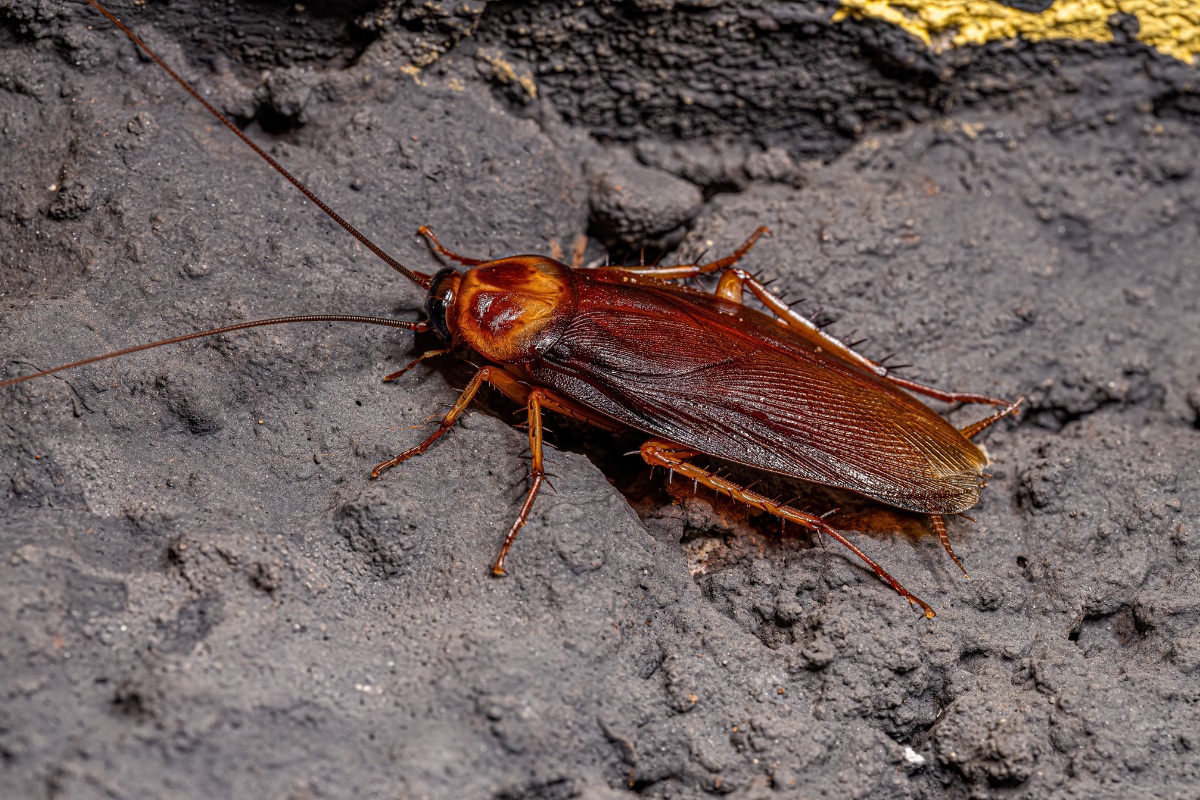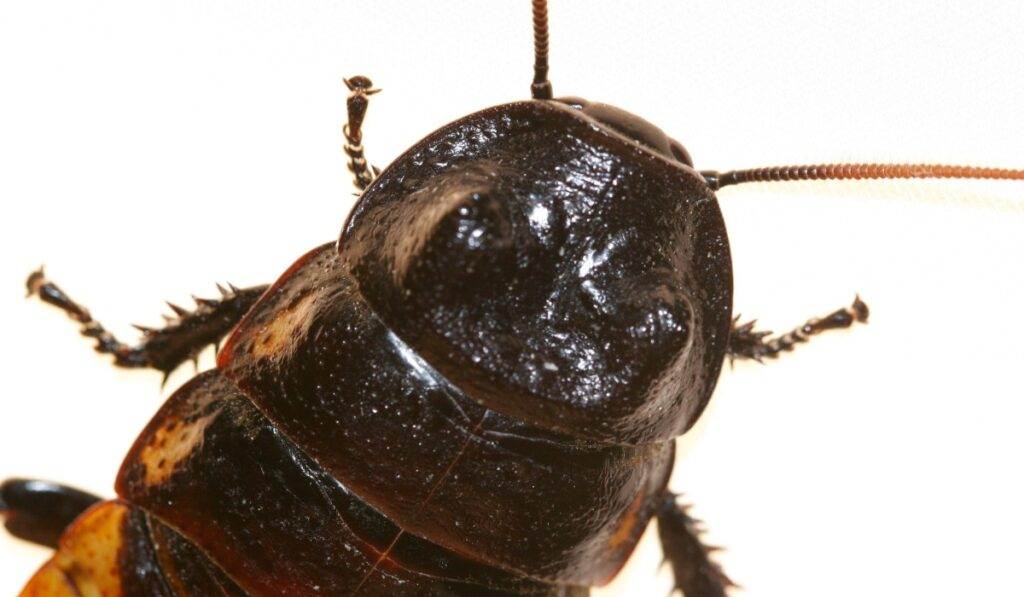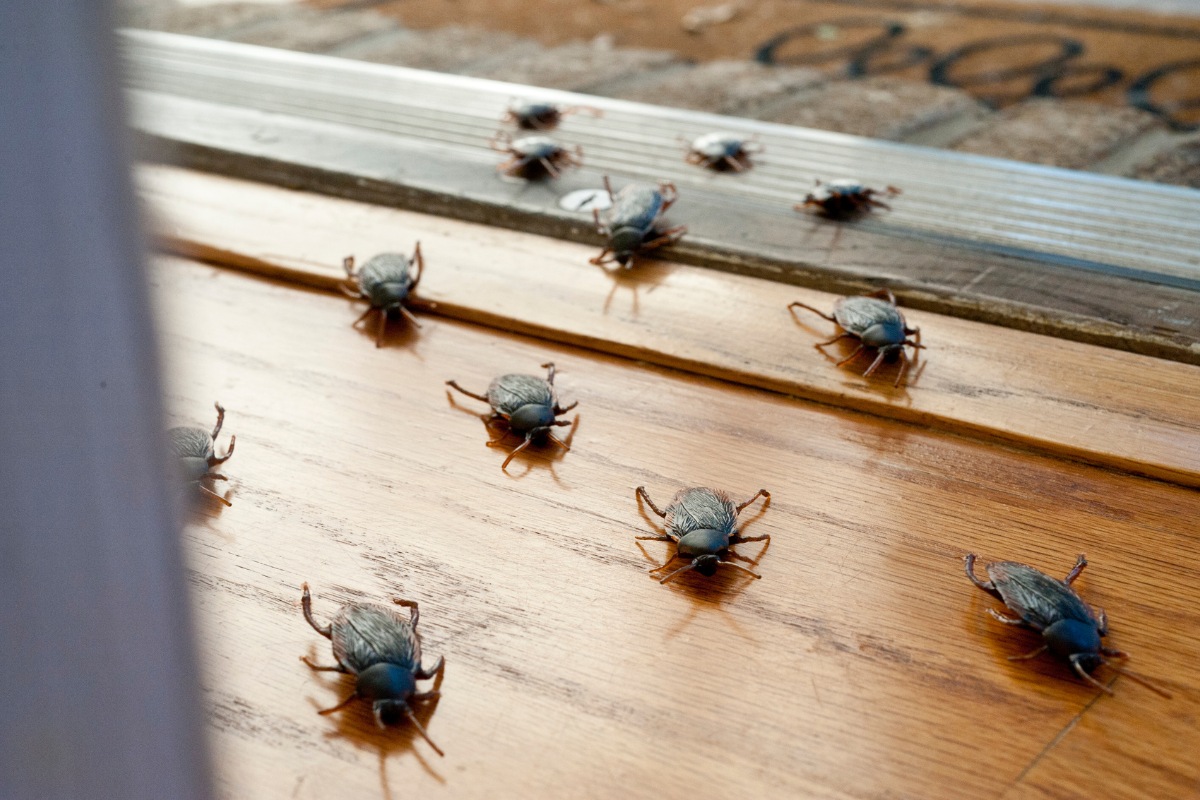Identify different types of Texas roaches and find pest solutions tailored for Texas homeowners. Proper roach identification is key for effective pest control services across Texas.
The Common Types of Roaches in Texas
Roaches are common pests in Texas, and identifying them is the first step in controlling them. Here are the most common types:
American Cockroach
- Description and Physical Features – The American cockroach, also known as Periplaneta americana, is one of the biggest roach species. They can grow up to 3 inches long and have a reddish-brown color with a yellowish figure-eight pattern on their backs.
- Common Habitats in Texas Homes – American cockroaches like warm, moist places. In homes, they are often found in basements, crawl spaces, kitchens, and bathrooms. They can also be seen near drains or any area with high humidity.
- Identifying Signs of Infestation – Signs of an American cockroach infestation include spotting live roaches, finding their droppings (which look like small black specks), and seeing egg cases or shed skins around your home.
German Cockroach
- Physical Characteristics – German cockroaches are smaller than American cockroaches. They measure about half an inch to five-eighths of an inch long. They are light brown to tan with two dark stripes running down their backs.
- Preferred Living Environments – German cockroaches thrive in warm, humid places close to food sources. They are commonly found in kitchens and bathrooms but can infest any area where food is stored or prepared.
- Detection Tips – To detect a German cockroach infestation, look for droppings that resemble black pepper flakes, egg capsules hidden in cracks and crevices, and a musty odor that these roaches emit when present in large numbers.
Oriental Cockroach
- Visual Identifiers – Oriental cockroaches are dark brown or black and have shiny bodies. They grow to about one inch long but appear larger due to their robust build.
- Habitats and Nesting Areas – These roaches prefer cooler environments compared to other species. You might find them in damp basements, crawl spaces, garages, or under sinks where moisture is prevalent.
- Signs of Their Presence – Look for signs such as strong musty odors they produce when infesting an area. Also watch for droppings that resemble mouse droppings but are slightly smaller.
Smokybrown Cockroach
- Appearance and Distinguishing Marks – Smokybrown cockroaches are uniformly dark brown to almost black with a glossy appearance. They can reach lengths of up to one-and-a-half inches.
- Typical Habitats – These roaches prefer warm climates and can often be found outdoors around mulch piles or woodpiles. Inside homes, they may inhabit attics or crawl spaces where it’s warmer.
- How to Spot Them – To spot Smokybrown cockroaches look for their distinctive dark color against lighter surfaces at night since they are nocturnal creatures attracted by light sources at dusk.
Brown-banded Cockroach
- Key Visual Traits – Brown-banded cockroaches have distinct light brown bands across their wings which make them easy to identify among other species. They are small-sized reaching only about half an inch long.
- Living Preferences – Unlike other types preferring moisture-rich areas; these roaches favor dry locations like ceilings closets furniture tops electrical appliances etc., making them harder detect initially!
- Indicators of an Infestation – Indicators include tiny droppings resembling ground coffee beans near infested areas along with egg cases glued onto surfaces plus visible sightings especially during daytime hours due lack hiding spots available unlike moist environments preferred by others!
Factors That Attract Roaches to Your Home
Environmental Factors
Roaches are often drawn to homes in Texas due to environmental factors like water sources and food availability. For example, leaky faucets or pipes can create moist environments that roaches love. Kitchens with crumbs or unsealed food containers provide easy meals for these pests. In Texas, where the climate is warm and humid, roaches thrive and multiply quickly if these conditions are present.
Structural Issues
Structural issues in your home can also lead to roach infestations. Common entry points include gaps around doors and windows, cracks in the foundation, and holes in walls. Roaches seek shelter spots such as cluttered basements or attics. In Texas, common roaches like the American cockroach find these structural vulnerabilities ideal for nesting and breeding.
Making Your Home Roach-Proof
Prevention Tips
To make your home roach-proof, start by sealing all entry points. Use caulk to fill gaps around windows and doors, and repair any cracks in the walls or foundation. Eliminating food and water sources is crucial; store food in airtight containers and fix any leaks promptly. These cockroach prevention tips can help keep your home free of these pests.
Behavioral Adjustments
Behavioral adjustments are also essential for preventing roach infestations. Proper waste disposal is key—make sure trash bins have tight-fitting lids and take out the garbage regularly. Regular cleaning routines, such as wiping down counters and sweeping floors daily, can remove potential food sources for roaches. By following these steps on how to get rid of roaches, you can maintain a cleaner, pest-free home.
Effective Pest Control Strategies in Texas
Safe & Effective Pest Control Services
Choosing the right pest control service is key to keeping your home or business free from pests. When picking a service, look at their reputation and experience. Make sure they offer a range of services and use safe methods for your family and pets.
Professional pest control services come with many benefits. They know local pests well and can provide solutions that fit your needs. These experts save you time compared to DIY methods, ensuring thorough treatment and prevention.
Handling Pests from A to Z
Taking care of pests involves several important steps. First, there’s an inspection to find out what kind of pests you have and how bad the infestation is. This helps decide the best treatment plan.
After the inspection, professionals use targeted treatments to get rid of pests. This might include baits, traps, or chemicals depending on what’s needed. For example, getting rid of roaches often requires specific products that are safe but strong enough to work.
Follow-up visits are crucial to make sure the treatment worked and to stop future infestations. Regular checks help catch any new activity early before it becomes a big problem.
Year-Round Pest Control Services
Year-round pest control is important because different pests are active at different times of the year. For example, ants might be more common in summer while rodents look for warmth indoors during winter.
Regular maintenance keeps you protected from these seasonal threats all year long. Proactive pest management means scheduled inspections and treatments that keep your property safe throughout the year. This approach not only deals with current problems but also prevents new ones from starting.
The benefits of regular maintenance include saving money by avoiding major infestations and repairs. It also gives you peace of mind knowing your home or business stays protected no matter what season it is.

Advantage Home Pest Control Programs
Scheduled home pest control programs offer many features that keep your home safe from various pests all year round. These programs usually include regular inspections, custom treatment plans, and follow-up visits to make sure everything works well.
One big benefit is constant monitoring which helps find potential issues early before they become bigger problems. Homeowners can relax knowing their property stays protected against common pests like ants, spiders, termites, and more.
These programs often come with guarantees or warranties that promise free re-treatments if pests return between scheduled visits. This added assurance makes scheduled programs a smart choice for maintaining a healthy living environment year-round.al harm.
Family Classification of Texas Roaches
Family Blattelidae
The Blattelidae family includes many types of Texas cockroaches. These pests live in various places and are well-known nuisances. Entomologists study Blattelidae to understand their behavior and find ways to control them. Knowing how to classify these cockroaches helps identify different species within this family.
Family Blattidae
Blattidae is another family with several Texas cockroaches. These insects can adapt to different environments, making them common pests. Entomologists focus on Blattidae for taxonomy and control methods. Understanding their classification aids in managing these pests effectively.
Family Blaberidae
Blaberidae also includes cockroaches found in Texas. Scientists study these insects due to their unique traits and behaviors. Classifying cockroaches within Blaberidae helps identify various species and develop effective pest control strategies.
Cockroach Diversity in Texas
Texas boasts a wide range of cockroach species thanks to its varied climates and habitats. Studying this diversity helps entomologists understand the ecology and evolution of these insects. Knowing the different species also aids in creating targeted pest control measures.
Understanding the families Blattelidae, Blattidae, and Blaberidae provides better insight into the diversity of Texas cockroaches. This knowledge is crucial for effective pest control and further studies in entomology.

Treatment For Roaches Infestations
Home Remedies
Home remedies can help deter roaches using items you might already have at home:
- Baking Soda and Sugar: Mix equal parts baking soda and sugar. Place this mix where you’ve seen roaches; the sugar attracts them while the baking soda kills them.
- Borax: Sprinkle borax in areas where roaches frequent. It’s toxic to them but safe for humans when used properly.
- Essential Oils: Peppermint oil and tea tree oil can repel roaches when sprayed around entry points.
By considering these options—from home remedies you can find an effective solution tailored to your needs for controlling roach infestations effectively.

